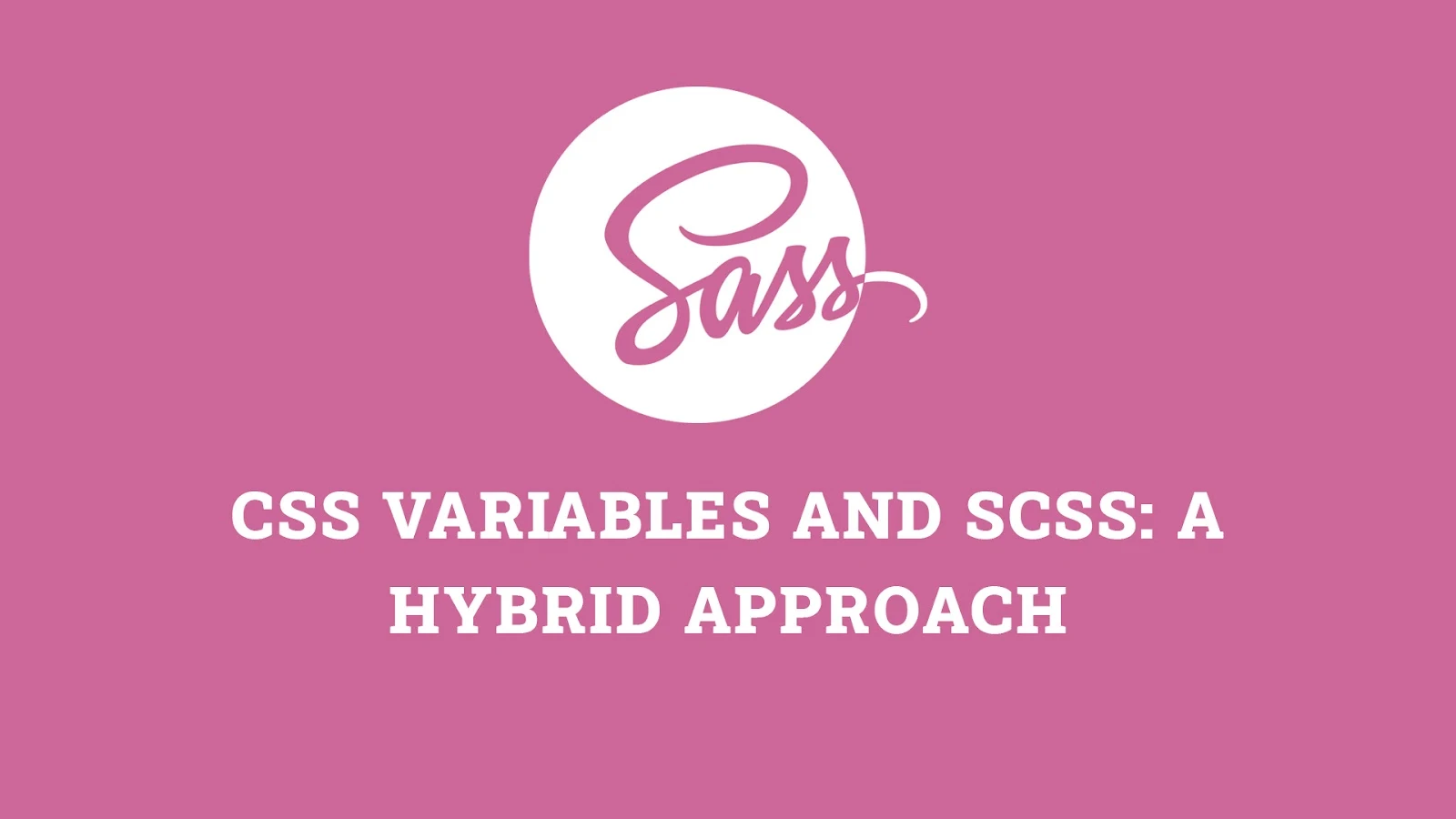Combining CSS variables with SCSS provides a powerful approach to writing flexible, maintainable, and dynamic stylesheets. This hybrid approach leverages the strengths of both CSS variables (custom properties) and SCSS to create responsive and customizable designs. In this article, we will explore how to use CSS variables in conjunction with SCSS, provide practical examples, and discuss best practices for implementing this hybrid approach.
Introduction to CSS Variables and SCSS
CSS variables (custom properties) are a way to store values that can be reused throughout a stylesheet. Unlike SCSS variables, CSS variables are dynamic and can be modified at runtime using JavaScript. SCSS (Sass) is a CSS preprocessor that allows for variables, nested rules, mixins, and more to make writing CSS more efficient and maintainable. Combining these two technologies allows for greater flexibility and dynamic styling.
Benefits of Using a Hybrid Approach:
- Dynamic Styling: CSS variables can be changed at runtime using JavaScript, allowing for more interactive and responsive designs.
- Maintainability: SCSS features like variables, mixins, and nesting make stylesheets easier to maintain and update.
- Flexibility: Combining CSS variables with SCSS allows for more granular control over styling and customization.
Setting Up CSS Variables and SCSS Integration
To use CSS variables with SCSS, you need to set up your project to support both. This section provides a basic setup guide.
1. Install SCSS (Sass):
# Install Sass globally using npm
npm install -g sass2. Create SCSS and CSS Files:
Create an SCSS file and a CSS file in your project directory:
styles.scssstyles.css
3. Compile SCSS to CSS:
# Compile SCSS to CSS
sass styles.scss styles.css --watchPractical Examples of Using CSS Variables with SCSS
Let's explore some practical examples of how to combine CSS variables with SCSS to create dynamic and maintainable styles.
Example 1: Theming with CSS Variables
In this example, we'll use CSS variables to create a theming system that can be easily customized using SCSS and JavaScript.
HTML:
<!-- HTML structure -->
<div id="theme-container">Theme Container</div>
<button id="toggle-theme">Toggle Theme</button>SCSS:
// SCSS styles with CSS variables
:root {
--primary-color: #3498db;
--secondary-color: #2ecc71;
--background-color: #fff;
--text-color: #333;
}
.dark-theme {
--primary-color: #2c3e50;
--secondary-color: #27ae60;
--background-color: #333;
--text-color: #ecf0f1;
}
#theme-container {
background-color: var(--background-color);
color: var(--text-color);
padding: 20px;
border: 1px solid var(--primary-color);
}JavaScript:
// JavaScript to toggle theme
document.getElementById('toggle-theme').addEventListener('click', function() {
document.body.classList.toggle('dark-theme');
});Advanced Techniques for Using CSS Variables with SCSS
Beyond basic theming, you can use CSS variables with SCSS to achieve more complex dynamic styling. This section explores advanced techniques for using CSS variables with SCSS.
Example 2: Responsive Design with CSS Variables
Using CSS variables, you can create a responsive design that adapts to different screen sizes.
HTML:
<!-- HTML structure -->
<div id="responsive-box">Responsive Box</div>SCSS:
// SCSS styles with CSS variables for responsive design
:root {
--box-width: 100%;
}
#responsive-box {
width: var(--box-width);
height: 200px;
background-color: $primary-color;
}
// Media queries with CSS variables
@media (min-width: 600px) {
:root {
--box-width: 50%;
}
}
@media (min-width: 900px) {
:root {
--box-width: 33.33%;
}
}Best Practices for Using CSS Variables with SCSS
When using CSS variables with SCSS, it's important to follow best practices to ensure maintainable, efficient, and scalable code.
1. Use CSS Variables for Dynamic Values:
Leverage CSS variables to store dynamic values that can be updated with JavaScript. This approach keeps your SCSS and JavaScript code clean and modular.
2. Maintain Separation of Concerns:
Keep your SCSS and JavaScript code separate to ensure modularity and maintainability. Use CSS classes and variables to handle the styling, and use JavaScript to manipulate these classes and variables.
3. Optimize Performance:
Avoid frequent and costly DOM manipulations. Batch style changes together and use requestAnimationFrame for smooth animations. This ensures that your web application remains performant and responsive.
4. Use Fallback Values:
When using CSS variables, provide fallback values to ensure that your styles work correctly even if the variables are not set or supported by the browser.
// SCSS example with fallback values
#themed-box {
background-color: var(--background-color, #fff);
color: var(--text-color, #333);
}5. Test Across Browsers:
Ensure that your dynamic styles work consistently across different browsers and devices. Use tools like BrowserStack or CrossBrowserTesting for cross-browser testing to identify and fix any compatibility issues.
Fun Facts and Little-Known Insights:
- Fun Fact: CSS custom properties (CSS variables) can be used to create dynamic themes that can be easily toggled with JavaScript, simplifying theme management.
- Insight: Combining JavaScript and SCSS allows for more granular control over styling, enabling you to create highly interactive and responsive web applications.
- Secret: By using CSS-in-JS libraries like styled-components, you can manage styles directly in JavaScript while still benefiting from the power of SCSS.
Conclusion
Combining CSS variables with SCSS offers a powerful hybrid approach to creating dynamic, maintainable, and flexible stylesheets. By leveraging the strengths of both CSS variables and SCSS, you can create more responsive and customizable designs. Following best practices ensures that your code remains efficient, scalable, and easy to maintain. Embrace this hybrid approach to unlock new possibilities in web design and development, creating a richer user experience.
 Reviewed by Curious Explorer
on
Thursday, December 12, 2024
Rating:
Reviewed by Curious Explorer
on
Thursday, December 12, 2024
Rating:




No comments: